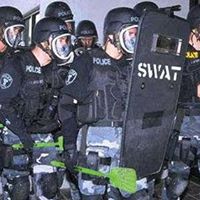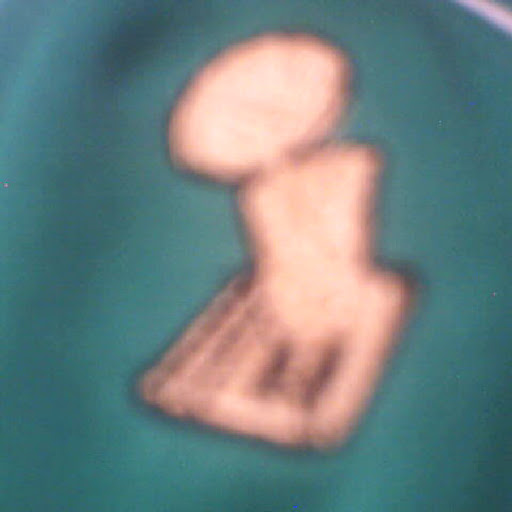Mark Allon Lorenz
age ~58
from Greentown, IN
- Also known as:
-
- Mark A Lorenz
- Mark Allan Lorenz
- Marka Lorenz
- Mark Lloyd
- Mark Z
- Phone and address:
-
7539 E 600 N, Greentown, IN 46936
7654727164
Mark Lorenz Phones & Addresses
- 7539 E 600 N, Greentown, IN 46936 • 7654727164
- Kokomo, IN
- Amboy, IN
- 979 300, Peru, IN 46970 • 7654723890 • 7654727164
- 2343 County Road 76, Quinter, KS 67752 • 7857543582
- 401 Grant St, Quinter, KS 67752 • 7857543582
- Wauseon, OH
Isbn (Books And Publications)


Object-Oriented Software Development: A Practical Guide
view sourceAuthor
Mark Lorenz
ISBN #
0137269285
Resumes

Lead Cath Lab Technologist
view sourceLocation:
Kokomo, IN
Industry:
Hospital & Health Care
Work:
Community Howard Regional Health
Lead Cath Lab Technologist
Lead Cath Lab Technologist
Education:
Fort Hays State University 1999 - 2003
Bachelors Eastern High School 1981 - 1985
Bachelors Eastern High School 1981 - 1985
Skills:
Hospitals
Cath Lab
Capital Equipment
Cardiology
Healthcare
Medical Devices
Interventional Radiology
Market Development
Operating Room
Lead Technologist
Cardiac Cath
Peripheral Vascular
Ivus
Philips Xper Superuser
Asd Closures
Aaa Endovascular
Vascular Laser
Rotational Athrectomy
Iabp
Alcohol Septal Ablation
Bi Ventricular Pacemakers
Icd
Drug Eluting Stents
Acute Mi
Cath Lab
Capital Equipment
Cardiology
Healthcare
Medical Devices
Interventional Radiology
Market Development
Operating Room
Lead Technologist
Cardiac Cath
Peripheral Vascular
Ivus
Philips Xper Superuser
Asd Closures
Aaa Endovascular
Vascular Laser
Rotational Athrectomy
Iabp
Alcohol Septal Ablation
Bi Ventricular Pacemakers
Icd
Drug Eluting Stents
Acute Mi

Mark Lorenz
view source
Mark Lorenz
view source
Mark Lorenz
view sourceName / Title
Company / Classification
Phones & Addresses
DAPPLE BEFORE DAWN LTD
NUTRISTATUS LTD
WRITTEN IN LOGIC LTD
Principal
Sheds of Steel Inc
Business Services at Non-Commercial Site
Business Services at Non-Commercial Site
979 N 300 E, Peru, IN 46970
Us Patents
-
Second Wire Apparatus And Installation Procedure
view source -
US Patent:20050209533, Sep 22, 2005
-
Filed:Mar 16, 2005
-
Appl. No.:11/081146
-
Inventors:Mark Lorenz - Peru IN, US
-
International Classification:A61M025/00
-
US Classification:600585000, 604528000
-
Abstract:This invention relates generally to a second wire apparatus and its installation in the PTCA (percutaneous transluminal coronary angioplasty) process. More specifically, this invention relates to construction of the distal end of the second wire apparatus and a system for guiding it down an earlier installed guide wire to assist in balloon angioplasty in vessels with proximal tortuosity or as a more substantial guide wire for atherectomy devices, stents, lasers or other medical catheter devices. The second guide wire apparatus allows for use of stiffer wire, reduces or eliminates twisting and coiling about the first guide wire, and permits the second guide wire to be fed rapidly down the first guide wire. The second guide wire apparatus can be fed all the way to the distal end of the first guide wire and then released from the first guide wire so that the first guide wire can be removed or advanced to the next stenosis if so desired. The second guide wire apparatus is sufficiently longer than the first guide wire so that the distal ends of the guide wires may be disengaged from each other at the point where the proximal ends of the guide wires are equidistant from entering the body or are disposed adjacent to each other.
-
Wire Guides Having Distal Anchoring Devices
view source -
US Patent:20060259063, Nov 16, 2006
-
Filed:Apr 25, 2006
-
Appl. No.:11/410723
-
Inventors:Brian Bates - Bloomington IN, US
David Gorky - Flemington NJ, US
Mark Lorenz - Peru IN, US -
International Classification:A61M 29/00
-
US Classification:606198000
-
Abstract:Improved wire guide devices having distal anchoring devices and methods of them percutaneously are provided. One device includes a wire guide having a distal portion operatively coupled to a holding body having a self-expanding end portion having wire members capable of assuming a first radially compressed configuration and a second radially expanded resilient configuration. Another device includes a wire guide distal portion operatively coupled to a distal anchoring device having a distal self-expanding suspension portion having a plurality of stabilizers capable of assuming a first radially compressed configuration when constrained by the outer sheath and a second radially expanded resilient configuration when the sheath is withdrawn proximally. An elongate outer sheath with first and second openings defining a lumen therebetween and slideably constrain the self-expanding portions to the compressed configuration. Expanded configurations help keep the wire guide distal portion at a target site within a body lumen.

Mark Mark Lorenz
view source
Mark Lorenz
view source
Mark Lorenz
view source
Mark Lorenz
view source
Mark Lorenz
view source
Mark Lorenz
view source
Mark Lorenz
view source
Mark Lorenz
view sourceMyspace

Mark Lorenz
view sourceGoogleplus

Mark Lorenz
Work:
Mark M. Lorenz Productions - Owner
About:
Nichiren Shu Buddhist, cyclist with CCB Racing, photo/video journalist.
Tagline:
Photo and video journalist based in Boston
Bragging Rights:
Markmlorenz.com

Mark Lorenz

Mark Lorenz

Mark Lorenz

Mark Lorenz

Mark Lorenz

Mark Lorenz

Mark Lorenz
Flickr
Youtube
Classmates

Mark Lorenz
view sourceSchools:
Saint Boniface School Germantown WI 1949-1957

Mark Lorenz
view sourceSchools:
Dr. Powers Public School Port Hope Morocco 1984-1991
Community:
Melody Halford, Eric Miedema, Daryl Greenwood, Norma Moerman, Brian Johnston

Mark Lorenz
view sourceSchools:
Billings Senior High School Billings MT 1996-2000

Mark Lorenz
view sourceSchools:
Okeene High School Okeene OK 1971-1975
Community:
Sherry Nusz, John Cayot, Charles Schultz, Timothy Burghardt, Stephanie Berdon, Judith Smith, Ana Taboada, Sam Ryan, Don Ryan, Kelly Brickman

Mark Lorenz | Independenc...
view source
Mark Lorenz, Hand High Sc...
view source
Mark Lorenz, Huron High S...
view source
Saint Boniface School, Ge...
view sourceGraduates:
Mark Lorenz (1949-1957),
Paul Ziino (1983-1986),
Barbara Gettelman (1957-1965),
John Dhein (1965-1973),
Justin Debroux (1988-1996)
Paul Ziino (1983-1986),
Barbara Gettelman (1957-1965),
John Dhein (1965-1973),
Justin Debroux (1988-1996)
Plaxo

Mark Lorenz
view sourceTechWorkers

Mark Lorenz
view sourceDemo's Auto Center

Mark Lorenz
view sourceJohns Hopkins University
Get Report for Mark Allon Lorenz from Greentown, IN, age ~58
















